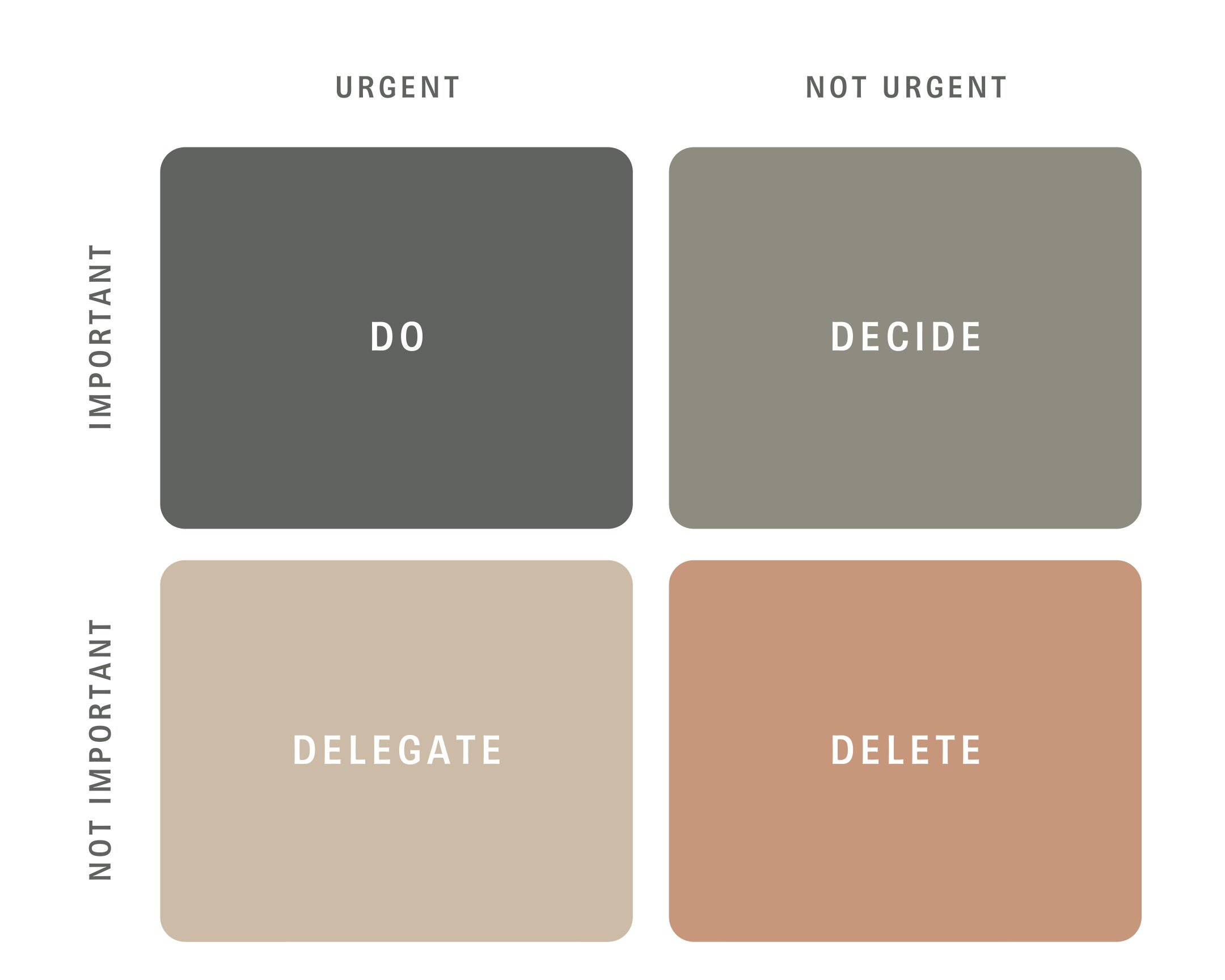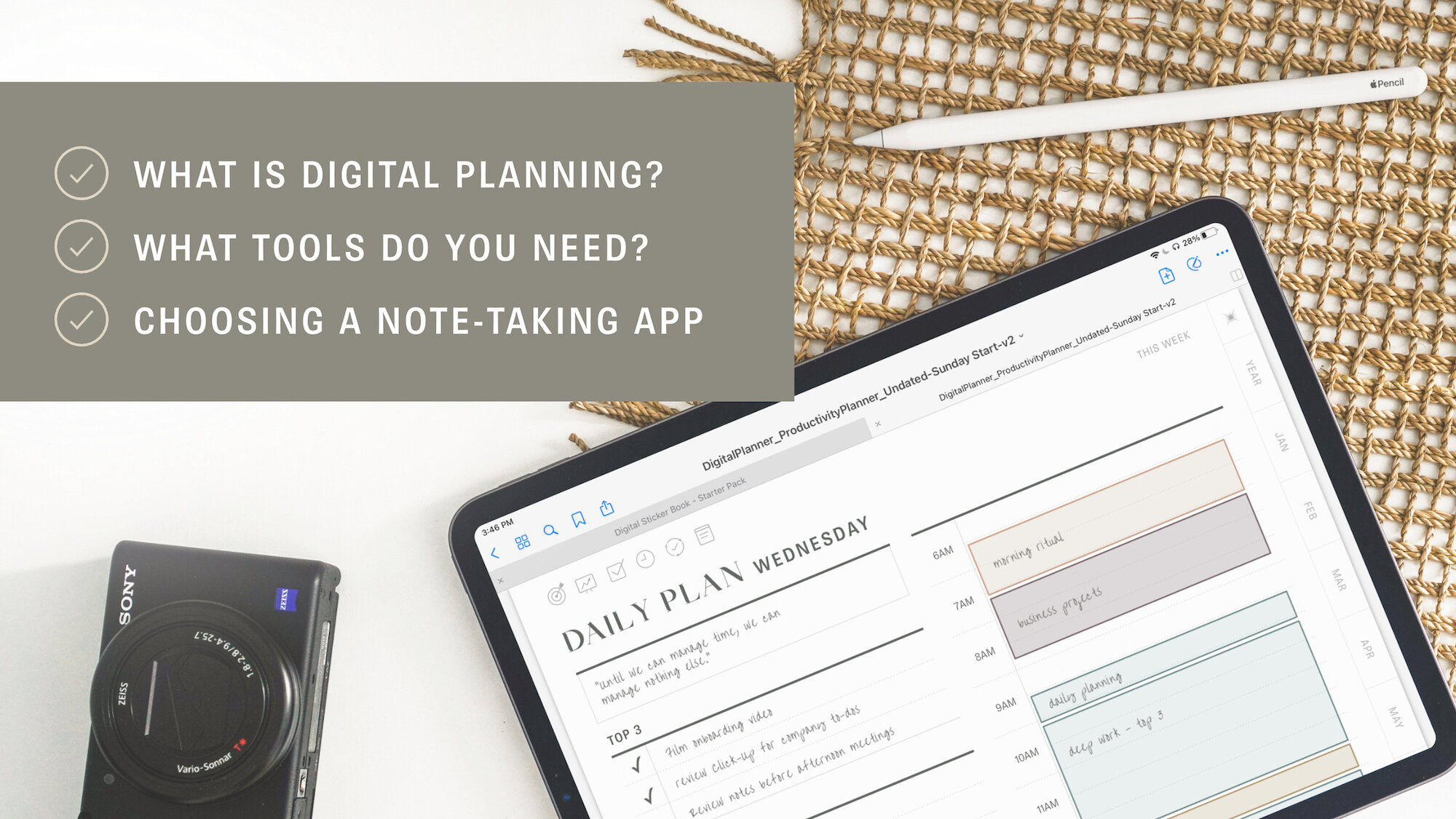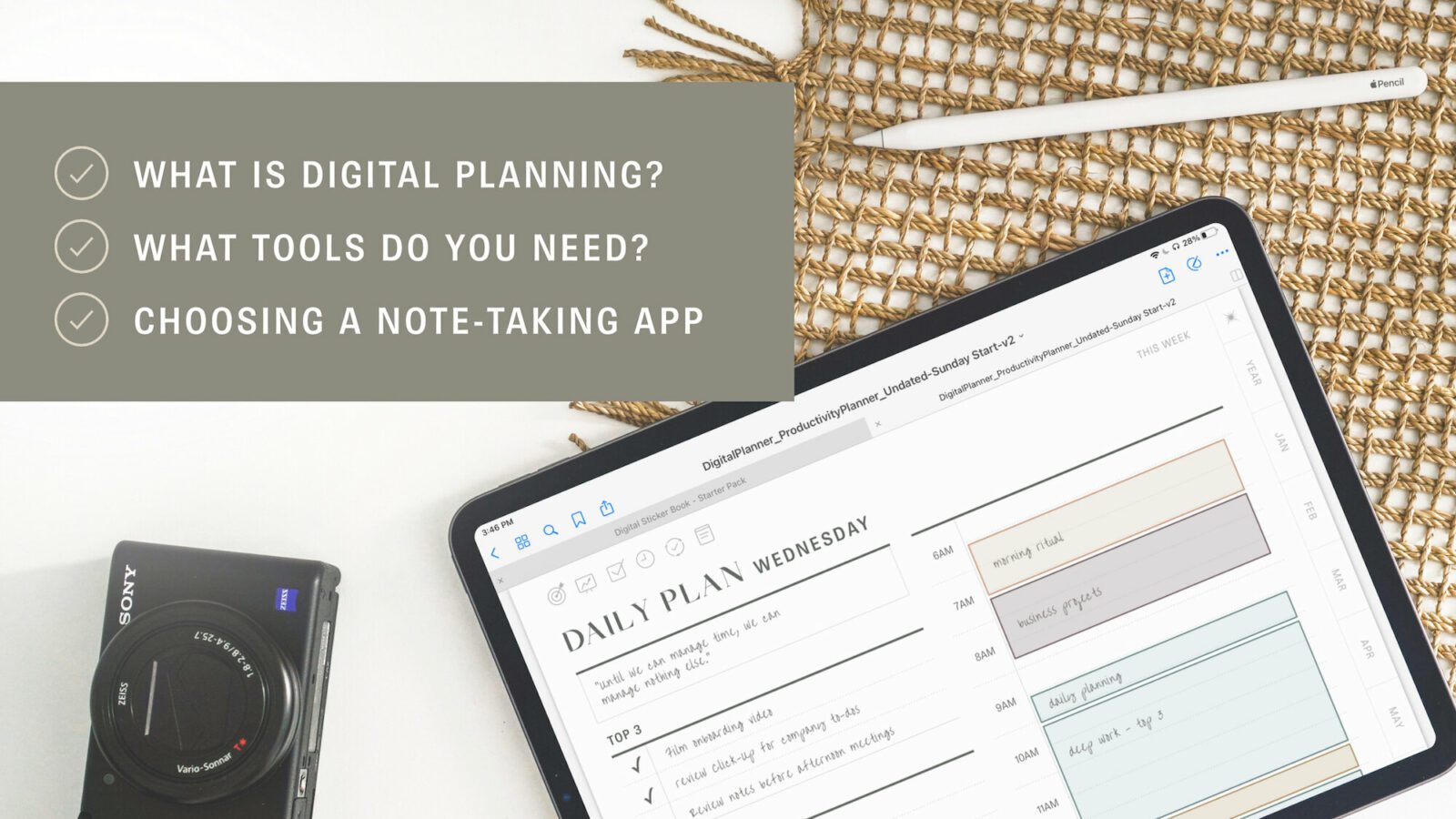

Even the most dedicated and efficient of us need a little help sometimes.
We are all bombarded with the distractions of sights, sounds, people, and too many tasks on a daily basis. This often gets in the way of our productivity and creativity. How to handle it? Enter the Eisenhower Method.
Also known as the Eisenhower Matrix, it is a method for organizing projects and tasks with the aim of figuring out priorities. It uses a quadrant system to evaluate tasks in order of urgent/not urgent and important/not important. Everything from what needs to be dealt with down to what can fall off the radar altogether.
The idea is to label four quadrants arranged in a square, effectively creating a simple matrix. At the top, the two ‘columns’ are labeled Urgent and Not Urgent. On the left side, the two ‘rows’ are labeled Important and Not Important.




DO.
These tasks are very important and should be tackled immediately. For obvious reasons, they are placed within the Important/Urgent quadrant (the first quadrant). They are the crises, deadlines, or urgent tasks that should be handled today or at the very latest tomorrow, in order to avoid negative consequences. An example would be answering a time-sensitive email from a client.
DECIDE.
These tasks lie in the Important/Not Urgent realm. They need to get done and should still have a deadline, just a little further out as needed. Tasks placed in this quadrant are in line with your long-term goals and help to reduce stress by recognizing that they can be done at a reasonable date in the near future.
DELEGATE.
This is the third quadrant (in the lower left, Important/Not Urgent) and should be populated with tasks that are less important, but still fairly urgent. In the world of business, these are the tasks that should be delegated to others who could probably do a better job at completing them. Or in your personal life, house chores that can easily be passed to someone else in your household.
DELETE.
The fourth quadrant can be a very satisfying quadrant because it forces you to analyze those tasks that are really unnecessary and “deleting” them from your routine. Here you can discover and stop the habits that are genuine time-wasters, such as stopping everything to check your email multiple times a day (instead of carving out just a couple of minutes once or twice a day). Putting tasks here frees up more of your time to devote to the quadrant 1 and 2 tasks.
To quote the great U.S. President, Dwight D Eisenhower, from whom this method was named,
“What is important is seldom urgent and what is urgent is seldom important.”
If you’re having trouble deciding which tasks to put in which box, ask yourself these two questions:
-
What am I working toward?
-
How does this task affect my project or life?
A good rule of thumb is to not put more than 6-8 tasks in any one quadrant, per day.
So grab that to-do list that’s been haunting you and apply this method to it. With a little more effort by using the Eisenhower Matrix, your life will get a whole lot better.
Enjoyed this Article?
Share it on Pinterest!




Featured Posts:
Featured
I’ve used both ClickUp and Asana extensively in my business and ended up sticking with ClickUp but that might not be what’s best for YOUR small business. In this video, you’ll learn about their notable features, pricing, why I ultimately chose ClickUp, and what would make me go back to Asana.
Are you new to Digital Planning? This in-depth tutorial will walk you through everything you need to know to use GoodNotes 5 on the iPad.
Learn what digital planning is, what tools you will need, and things to keep in mind when choosing a note-taking app.










